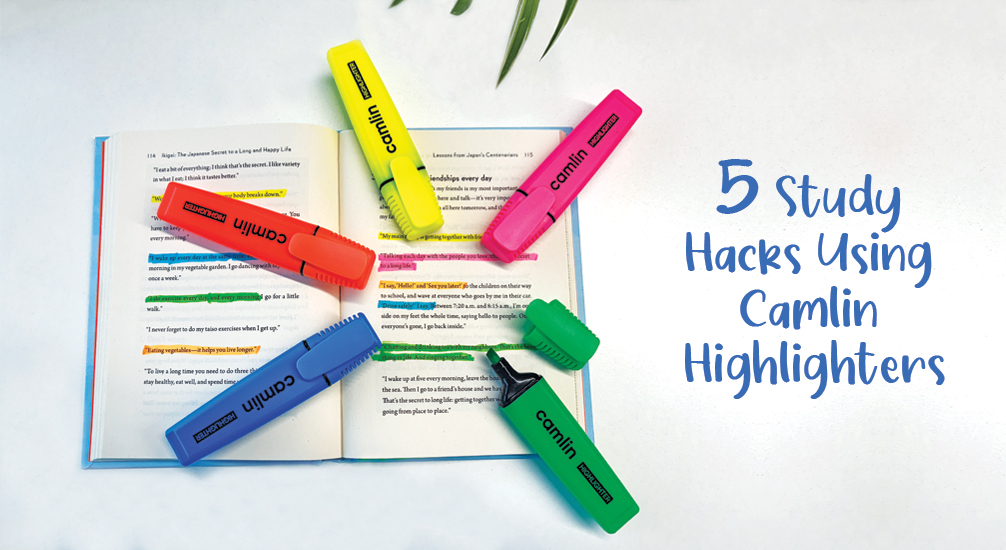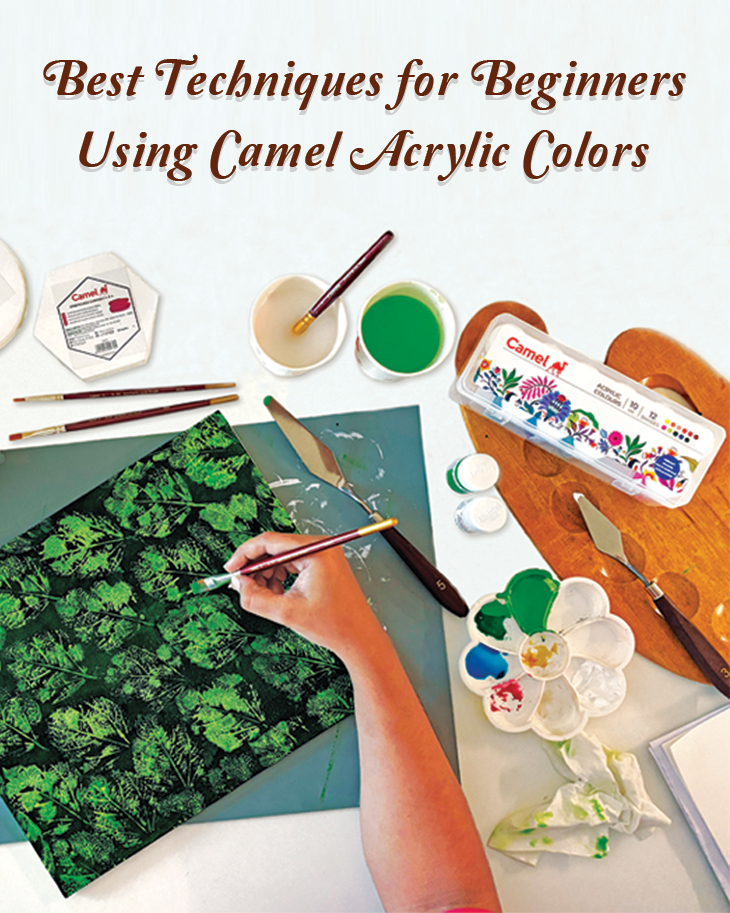Reading through pages of notes can be overwhelming. And to go through an information overload every time you revisit them can be mentally overstimulating. What if we tell you that studying does not have to be a snoozefest? All you need is a splash of colour with highlighters to up your memorising game!
Whether you are a visual learner or an annotating pro, we've got you covered. With Camlin Highlighters and some tried and tested study tips 2025 students are looking for, let’s see how you can make the most of your last-minute exam preparation.
1. Highlight Only The Essentials
As the name suggests, a highlighter is used to highlight, and sure, it might seem like everything you’re reading is important. But you have to be mindful of marking things that are valuable to help you recall. Think of important phrases, keywords, dates, etc. Your brain is more likely to remember bite-sized information instead of full-fledged sentences, which also defeats the purpose of highlighting, right? So before you swipe that highlighter across a sentence, read it thoroughly and identify the right keywords.
2. Headings Only
Highlighting headings and subheadings is a quick way to memorise the structure of your notes, especially for quick revisions. Browsing through your notes last minute and going through headings are a quick way to recollect everything under it without you having to go through the whole section. However, make sure you use the same colour highlighter to maintain consistency and keep your notes neat.
3. Colour-Coding Concepts
Assigning visual tags helps your brain identify and file things better so that when it comes to recall, you are quicker to access a specific piece of information. Thus, you can assign a specific colour to a type of information. For example, dates can be highlighted in blue, definitions in green, etc. And keep a legend of each colour at the beginning of your notes so that you don’t forget!
4. Layer While Learning
Another method of memorising is the layering method. Simply put, use a different colour highlighter to highlight every time you revise. For example, use yellow for the first reading, green for the first revision, blue for the second one, and so on. Make sure you start with a lighter highlighter and choose darker ones as you go. Highlighting the keywords every time reinforces keywords and helps retention.
5. Highlighting As An Active Recall Technique
Converse to the first technique suggested, this one involves highlighting sentences but leaving out a couple of words or phrases. These non-highlighted phrases are then to be recalled later on. Doing this will force your brain to recall and help jog your memory faster actively. It’s like making your own fill-in-the-blank questions! A pro tip – use a lighter highlighter like yellow so that the colour does not overwhelm the text, similar to some glowing gibberish.
6. The Traffic Light Method
Quite self-explanatory, it simply means using three colours to highlight information based on the level of importance assigned to it, i.e.,
- Red/Pink: Extremely important. Needs multiple revisions. Highly likely to be asked.
- Yellow: Read again.
- Green: Important, but manageable.
With each colour having a typical emotion associated with it, it becomes easier to spot the more important concepts and spend more time on them. However, make sure to use this colour legend judiciously. If everything is red, then nothing is.
7. Reverse Highlighting
Instead of highlighting what you know or what you think is important, highlight the things that you don’t know or find difficult to understand or retain. Marking your weak spots means you are less likely to waste your time on revising the easier concepts and instead focus on the trickier stuff. Using brighter shades elicits emotions of urgency, so a red or orange highlighter can get the job done.
Conclusion
When used with the right intent, highlighters can turn a wall of text into a visual roadmap for your exam preparation. With the best study stationery from Camlin and these memorisation techniques up your sleeve, you are all set to pass with flying colours! Happy Learning!
Did this article help you learn something new?
Share your thoughts with us in the comments below.
Leave a comment

Comment added
Comment updated
Comment deleted
More inspiration
“
“Art is not what you see but what you make others see.”




